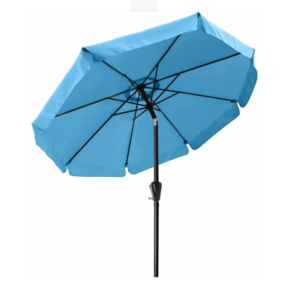
When it comes to securing your patio or cantilever umbrella, the choice of filling the base with sand or water is crucial. Both options offer advantages, but selecting the right one depends on various factors like stability, weight, and ease of use. In this article, we will explore the pros and cons of using sand versus water in an umbrella base to help you make an informed decision.
Before deciding whether to use sand or water, you need to consider the following factors:
| Factor | Water | Sand |
|---|---|---|
| Weight/ Stability | Lighter (100-150 lbs when filled) | Heavier (up to 200 lbs when filled) |
| Ease of Filling | Easy to fill and drain | Harder to fill and remove |
| Portability | Easier to move | Difficult to relocate |
| Maintenance | Requires more care to avoid leakage | Less risk of leaking |
| Durability | May freeze in cold weather | Stable in all weather conditions |


The biggest difference between water and sand comes down to stability. Sand provides up to 30-50% more weight than water, which is crucial for keeping larger umbrellas upright in strong winds. Below is a comparison table of how each material affects stability:
| Base Filling | Average Weight (Filled) | Recommended Use |
|---|---|---|
| Water | 100-150 lbs | Small umbrellas, less windy areas |
| Sand | 150-200 lbs | Large umbrellas, windy conditions |
Choosing whether to fill your umbrella base with sand or water depends on your specific needs. Water is more convenient, easy to manage, and ideal for those who frequently move their umbrellas. On the other hand, sand offers superior stability, making it the best option for windy conditions and larger umbrellas.
For long-term outdoor use or in areas with heavy winds, sand is the better choice due to its added weight and durability. If you value portability and ease of filling, water may be more appropriate, especially for smaller umbrellas in calm weather.
In some cases, a hybrid option, combining sand and water, can offer a balanced solution, giving you added weight without sacrificing the ability to move your umbrella when needed.